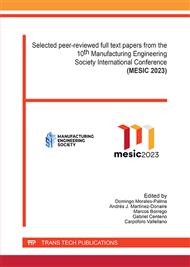p.475
p.485
p.494
p.502
p.511
p.523
p.531
p.540
p.549
Identification of Criteria for the Protection and Enhancement of Railway Industrial Heritage Assets through the Analysis of Two Examples on the Border between Spain and Portugal
Abstract:
Spain and Portugal share a common track gauge, different from the European standard gauge, and they have come to have 5 rail connections of which only 3 are currently active. On the two disused connections two different programs have developed for their respective protection, conservation, and valuation in the service of society. In the Spanish province of Salamanca, the route from the railway station of Boadilla-Fuente de San Esteban to the Portuguese border. This route has been recognized as a Bien de Interés Cultural (BIC) since 2000 and has been preserved including all the infrastructure and a good part of the railway superstructure. The Camino de Hierro program, at the final section, is a route of 17 km, conditioned for walking, crossing the Natural Park of Arribes del Duero. The program is managed by public initiative of the Diputación de Salamanca. On the other hand, we have the railway connection from Caceres to Valencia de Alcantara (last Spanish town) that then crosses into Portugal through Marvão-Beirã (first Portuguese station) to Torre das Vargens, where it connects with the route currently in use from Badajoz, through Elvas to main station of Entroncamento. Between the first two Portuguese stations, a private initiative (Rail Bike Marvão) has launched a program to make this 15 km route traversable on pedal-operated platforms on the railway and crossing the Serra de São Mamede Natural Park. This paper analyses both initiatives, identifying their strengths and weaknesses and the strategies employed as examples of good reference practices for similar initiatives, in order to identify key aspects which will be part of the criteria that the authors want to define as the initial phase of a methodology for the application of decision-making techniques in the management of these kind of assets.
Info:
Periodical:
Pages:
511-519
Citation:
Online since:
October 2023
Authors:
Price:
Сopyright:
© 2023 Trans Tech Publications Ltd. All Rights Reserved
Share:
Citation:



